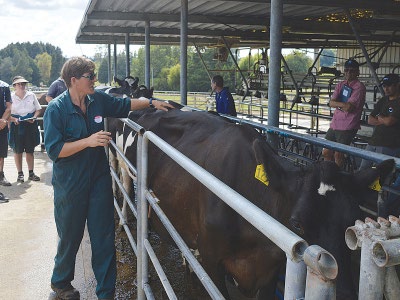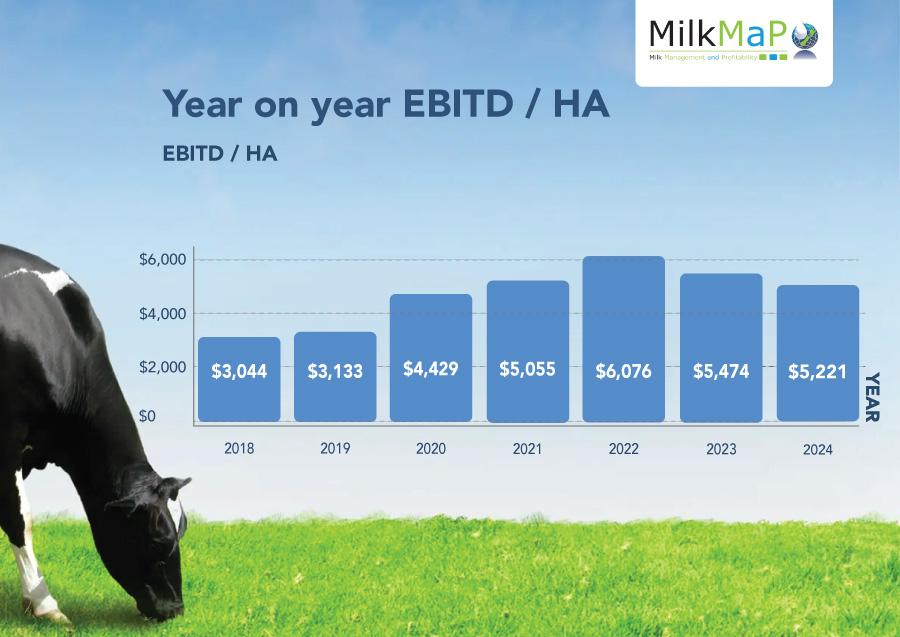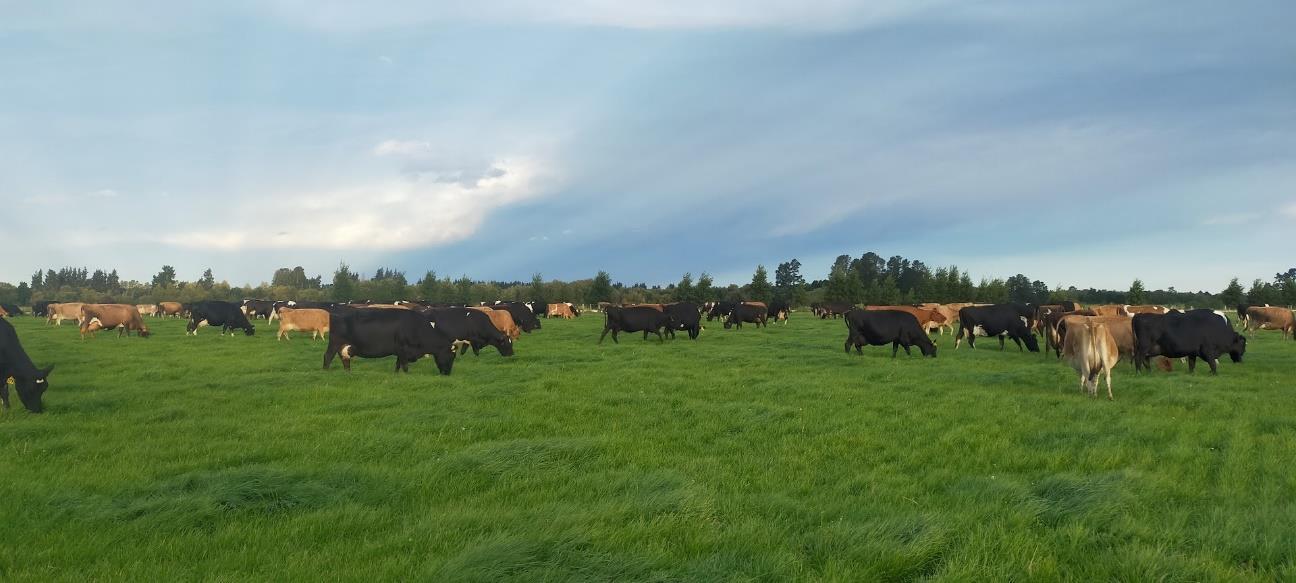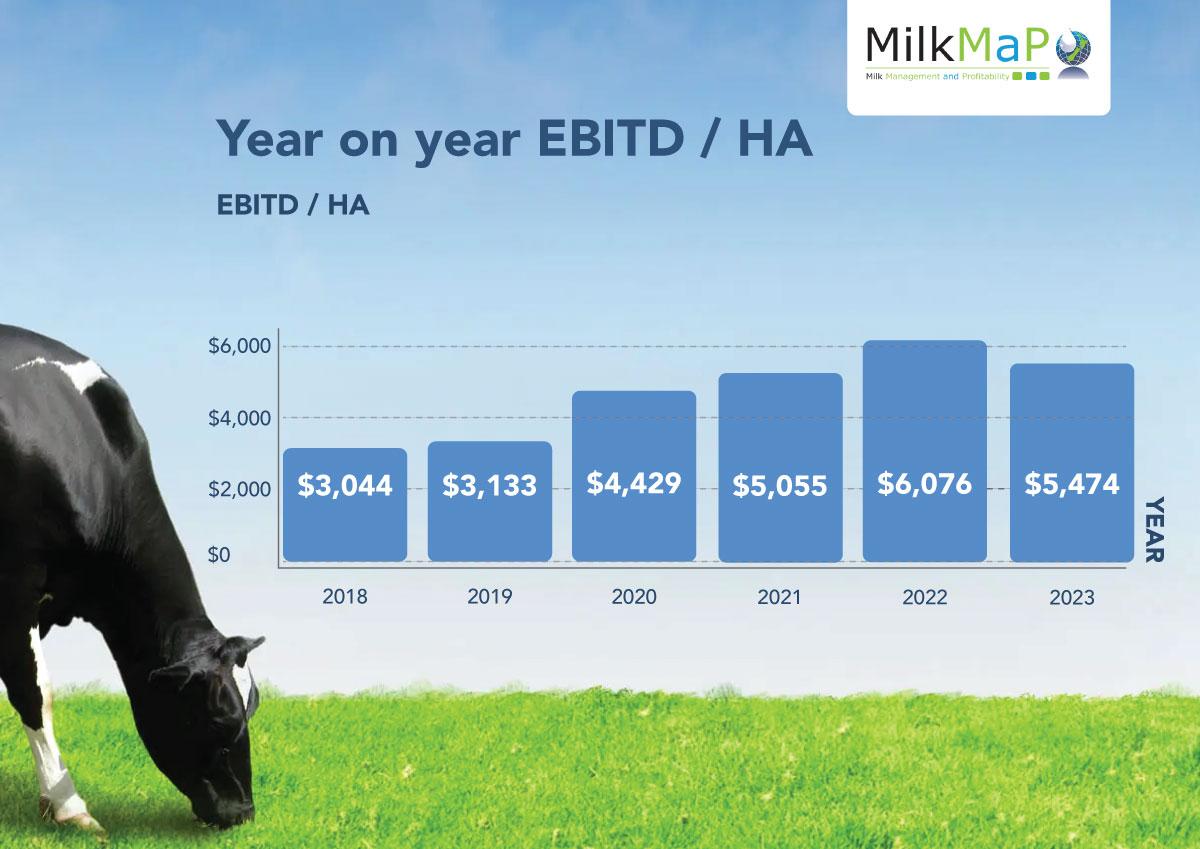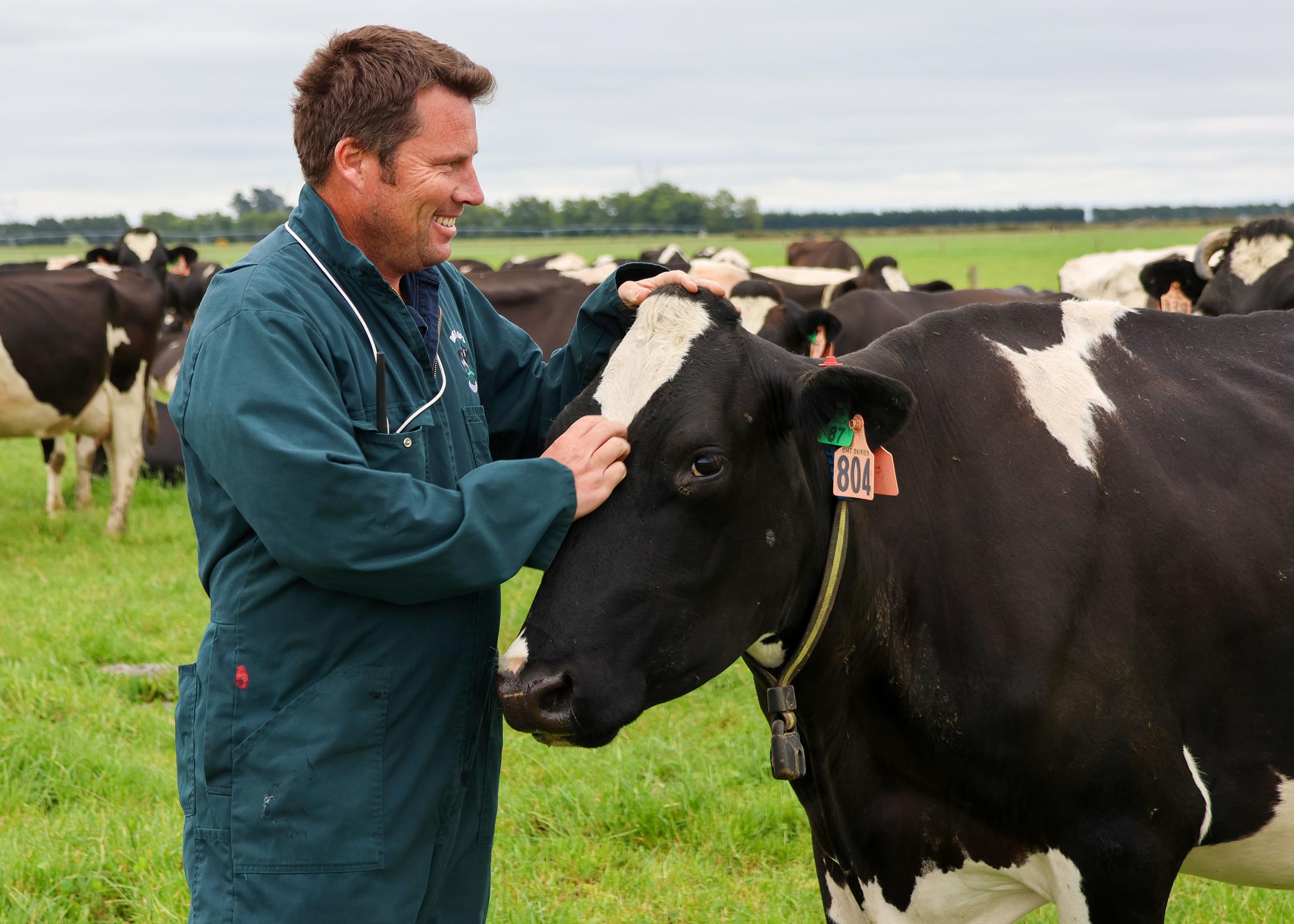It’s been a wetter start to the season than we have gotten used to. After a damp dry-off and a cold July, August started hopeful for an excellent dry start to the season, but this changed quite rapidly. Despite the challenges of a wet spring, our cows are milking well. Most farms had a slower start than predicted, but now our Southern clients are, on average, tracking on budget or slightly ahead of budget. This bodes for a great season as we head into the second round and, hopefully, some nicer weather.
Weather
Following La Niña-like atmospheric patterns forming during June. There’s a 60-70% chance that La Niña will develop during spring.
Temperatures are about equally likely to be near average or just above average for the region. Cold snaps, like what occurred in early July and early September, will occur occasionally but likely won’t define the season. Total annual rainfall is about likely to be near normal or above average in the west of the South Island and most likely to be near normal in all other regions. This represents the wetter trend we are seeing compared to last season, NIWA expects above-normal rainfall to be likely for all regions of the country from August to October.
In the last 30 days, the rainfall across the Southland region has been, on average, 73.5mm more than for the same period last year. However, the season-to-date average is on par with or a little behind last year. Another cold snap is forecasted for the region next week, after which some warmer temperatures are predicted, encouraging pasture growth and drying.
Pasture Position
The pasture situation across the region is very varied. Some have had to make the tricky decision to go around the farm faster to reduce pasture damage, whereas others are right on track to starting the second round around September 20th. The average pasture cover on most farms is still on target.
First round pasture looked stressed and dull. Despite the conditions, the second-round pasture is looking healthy and lush. This is promising for milk production, leading to peak milk production.
Even with the wet conditions and frosts in July, soil temperatures have been around 8 degrees for the last month. This means nitrogen has been applied when possible and has had good responses. Some farms used the dry patch in early August to apply some, if not all, of their first round of nitrogen this has been beneficial to maintaining pasture growth.
Weather conditions are set to improve in the next 10 days. Once ground conditions allow, prioritising nitrogen application would ensure the quality and quantity of the second-round pasture.
Due to the soil conditions, some farms have had to offer larger areas than initially planned to reduce pasture damage. This and the muddying of pasture due to conditions have caused the post-grazing residuals to be higher. Post-grazing residuals of 1,800 kg DM/ha have been common.
However, residuals can be cleaned up in the next round or 10-12 days alter the mud has washed off and the paddock has had a chance to refresh. The second-round pasture is of excellent quality, leading to cows cleaning up these residuals naturally.
As we head into the second round, it is advisable to take herbage samples of few different paddocks; this will allow us to build a ration that complements pasture. As the pasture composition changes in the next round, monitor rumen fill closely. The second-round pasture in our region is some of the lowest NDF pasture in the world, which can lead to hollow cows. Some level of acidosis may affect the cows during this period. This will need to be monitored closely to ensure cows don’t lose their peak.
Animal Health
This season has seen significant improvement in down cow cases compared to last year. This has led to healthier herds and increased milk production. By focusing on prevention, it has created an environment where cows thrive, resulting in higher-quality and more consistent milk yields.
Unfortunately, the weather has increased other health issues, such as mastitis and lameness.
Affected farms are now getting on top of these issues.
In preparation for the mating season, it’s important to minimise body condition score (BCS) loss in cows. Identifying cows struggling to maintain their weight is crucial for successful mating.
Implementing once-a-day milking for cows with a BCS of less than four will help support their recovery and improve fertility rates.
Milk Components
Milk components including protein and fat will change depending on the ration being offered.
Milk protein will largely remain static from this point on as cows remain in a protein surplus. However, it is important to balance the ration with readily fermentable ME sources to ensure that the rumen microbes can efficiently utilise the protein fraction. Without supporting the protein surplus with additional ME will result in lethargic cows who will often fall off from their peak rather quickly. As the pasture in the second round will also be of very low NDF, rumen passage rate is extremely fast and often leads to poor uptake of rumen degradable protein sources. Free to access straw in the lane can help cows better regulate this complication.
Milk Fat can be controlled by a variety of factors and plays the largest role in ensuring per cow production is upheld into the second round. Some key areas include:
- Pasture Dry matter content
- Fibre in the ration
- Supplemental feed
- Including the fat content of the feeds being offered
- Cows stripping body fat to hold production
In lush spring pasture the total dry matter can go as low as 13%, typical pasture DM sits around 18-20%. Therefore, as a rule if you offer the same area as you did prior to the second round, cows could miss out on 30% of their daily allocation if not accounted for. Commonly we see this as decked out paddocks 4hrs before milking. The result of underfeeding your cows show in a spike in the milk fat test and a sudden drop in litres.
The cow will protect her production by lifting the fat % but over several days she will forgive the higher production in an effort to prevent further condition loss. Pre mowing of paddocks 2-3 hours before cows enter will start a wilting process which will rapidly increase the DM of the pasture. It can be a good strategy for maximising DM intake during spring.
In the rumen, several microbes operate in varying strengths depending on the pH conditions present.
In higher pH environments fibre fermenters thrive and convert the feed to acetic and butyric volatile fatty acids (VFAs). These together are precursors to milk fat production. Therefore, ensuring sufficient fibre fraction of the ration will help prop up fat. Straw in the ration as free to access on laneways will help cows self-regulate. However, be mindful that on a majority pasture ration, a small amount of straw will make very little difference.
The opposite VFA, common in low pH environments, include starch fermenters that produce
Propionate. This VFA is a precursor to glucose production, increasing the insulin response and lifting the protein component. Highly fermentable feeds such as grain will ultimately restrict the fat test but supply the energy component required to reach peak production.
Setting up for success
Most farms still have the handbrake on, as you never know what the weather can throw at us in mid-September. However, cows are milking well, considering this. I would hold off making any drastic changes to the feed plan for another 10 days to see what the growth rates and weather are looking like. My feeling is that we will see good growth in the second half of September we should be able to crank into things then.







